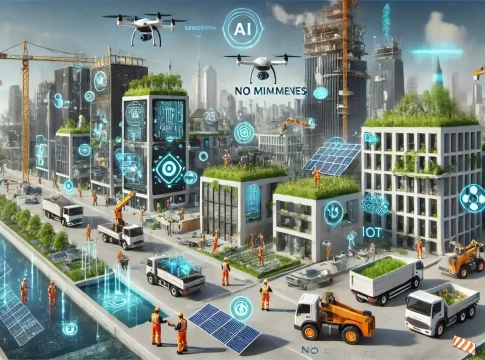In an exciting development for infrastructure and environmental sustainability, scientists have leveraged artificial intelligence to create a groundbreaking type of concrete that promises to be both self-healing and eco-friendly. This innovation could lead to roads and highways that require fewer repairs and help cut down carbon emissions, providing substantial benefits to both urban planners and environmentalists.
Concrete, the backbone of construction worldwide, is notorious for its environmental impact, particularly due to the carbon-intensive process of cement production. Engineers have tirelessly searched for ways to enhance the material’s longevity and sustainability. Now, with the power of AI, they’re making significant strides.
By employing machine learning algorithms, researchers are able to meticulously analyze myriad potential concrete compositions. This method allows them to test interactions of materials at a molecular level, predicting which combinations yield the most durable and sustainable results. The AI’s ability to rapidly identify optimal mixtures is a game-changer, minimizing the need for extensive physical testing.
A key breakthrough in this AI-designed concrete is its use of innovative materials like recycled industrial byproducts and biodegradable additives. These materials not only enhance the concrete’s durability but also imbue it with self-healing properties, enabling it to repair cracks autonomously before they expand into potholes or other significant damage.
Moreover, this advanced concrete is being designed to be as robust, if not more so, than its traditional counterparts, while also reducing cement usage and associated carbon emissions. The vision is to foster the development of more resilient infrastructure—roads, bridges, and buildings—that can withstand natural calamities like earthquakes.
Interestingly, there’s potential for this new concrete to function as a carbon sink, capturing and storing atmospheric carbon dioxide, thus contributing to broader carbon reduction goals.
Beyond improving the concrete itself, AI is also revolutionizing its application. With AI-driven simulations, architects and engineers can anticipate how structures will endure stress, weather, and time, leading to smarter, more resilient construction designs.
As the global demand for concrete continues to rise, innovations like AI-designed, self-healing concrete offer a promising pathway forward. By embracing such advancements, the world can advance towards a sustainable future, tackling climate change head-on while bolstering infrastructure resilience.


